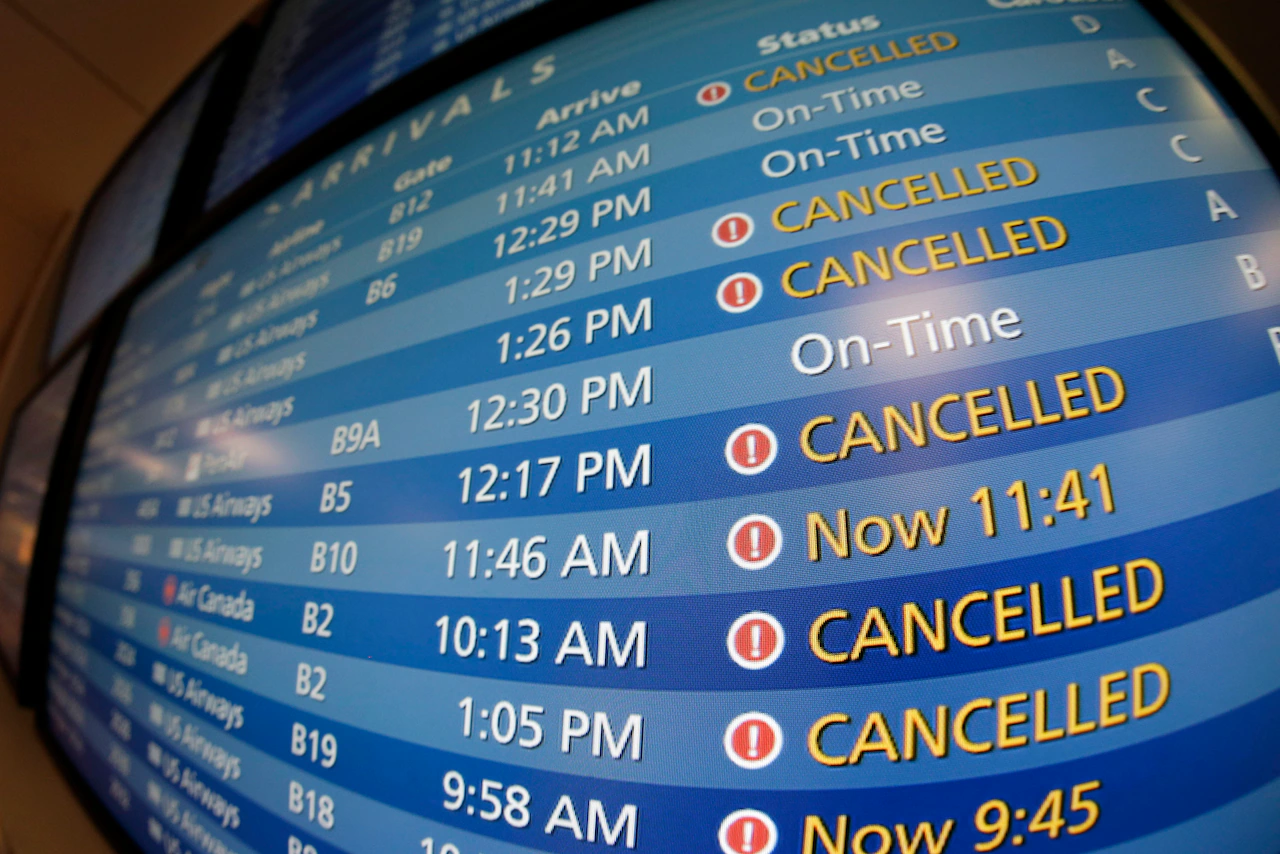Copyright The Mercury News

By Rio Yamat, Josh Funk and John Seewer | Associated Press Airlines have canceled more 9,000 flights across the U.S. since the Federal Aviation Administration ordered flight cuts late last week, mostly to ease demand on control towers that are short-staffed during the federal government shutdown. Although the government appears to be moving to reopen in the coming days, airport disruptions, flight cancellations and economic losses won’t go away all at once. RELATED: Bay Area airports continue to see flight cancellations, delays Here’s how the air travel network is being impacted: Flights remain disrupted as the shutdown nears an end Another 1,200 commercial flights were scratched Tuesday as the Federal Aviation Administration bumped up its target for reducing domestic flights at the nation’s busiest airports to 6%, up from an initial 4% cut at those 40 airports. However, the cancellations so far Tuesday have been less than in the past couple of days. Cancellations are unlikely to ease right away The FAA hasn’t put a timeline on when it will ease back on the flight limitations. Transportation Secretary Sean Duffy says the cuts won’t go away until safety measurements improve and staffing levels stabilize at air traffic control facilities. Flight cuts won’t end until FAA sees safety improve Duffy has declined to share the specific data that prompted FAA to imposed the flight cuts last week, but he told Fox News on Tuesday that he was seeing reports of loss of separation between aircraft in the air, more runway incursions and airline pilots telling the FAA they were concerned with the responses they were getting from controllers. Air traffic controller shortages won’t go away either The nationwide shortage of air traffic controllers isn’t new, but the shutdown exposed just how fragile the system is. Controllers who weren’t being paid have increasingly called off work during the shutdown, citing increased stress and the need to take side jobs to pay bills. Union leaders said this week that the number of controllers who retired or quit during the shutdown was “growing” by the day. Airlines must readjust after FAA order is lifted The flight restrictions have upended airline operations in just a matter of days. Many planes were rerouted and aren’t where they’re supposed to be. That could slow the airlines’ return to business as usual even after the FAA lifts the cuts, said Mike Taylor, an analyst with J.D. Power. Major airports bear the brunt of flight cuts Hub airports in Denver, Atlanta, Chicago, Dallas and the New York area have seen the bulk of the cancellations. They’ve also been plagued by long delays caused by staffing shortages in regional air traffic control centers and towers. Trump posts a demand to get back to work The head of the air traffic controllers union emphasized this week that the controllers were not walking off the job as part of an organized protest and were committed to their work. However President Donald Trump on Monday blasted those who’ve taken time off during the shutdown, posting on social media “get back to work, NOW!!!” He also called for docking pay for those who didn’t stay on the job, and a $10,000 bonus for those who kept working. Holiday travel outlook darkens amid persistent disruptions The pace of airline ticket sales for Thanksgiving travel has slowed as more travelers reconsider whether to fly amid all the delays and cancellations. Aviation analytics firm Cirium said ticket sales during the busy travel season at the end of November are still expected to be up over last year, but only slightly. Airlines face mounting losses Canceled flights and mounting delays are adding to big losses for the airlines. The lost revenue is likely to add up to “hundreds of millions of dollars a day,’’ said Greg Raiff, CEO of the Elevate Aviation Group. He expects the toll to show up when the airlines start issuing earnings warnings for the fourth quarter. Millions of people were affected An estimated 5.2 million passengers have been affected by staffing-related delays or cancellations since the shutdown began on Oct. 1, according to Airlines for America, an industry trade group. However, it said cancellations really didn’t become a significant issue until the FAA ordered the flight cuts last week. Yamat reported from Las Vegas, Funk from Omaha, Nebraska, and Seewer from Toledo, Ohio.



